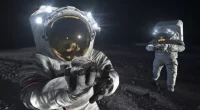NASA’s science chief who oversaw some of the U.S. space agency’s ambitious endeavors including the successful deployment of the James Webb Space Telescope and Perseverance Mars rover, is set to step down at the end of the year.
The Swiss-American astrophysicist has served as head of NASA’s science mission directorate since 2016, shepherding the agency’s roughly 100 missions. He announced his planned departure in a memo sent to NASA employees on Tuesday.
“This is a difficult decision for me, but I believe it is time for a new beginning – for the directorate and for me”
Zurbuchen wrote
His planned departure comes as NASA focuses heavily on sending astronauts back to the moon and eventually to Mars under its multi billion dollar Artemis program begun in 2019.
He led the science directorate as it sent NASA’s Perseverance rover to the Martian surface, where it has collected rock samples to study whether that planet once may have had conditions conducive to life. The rover’s mission also included the flight of a helicopter on another planet for the first time.

Zurbuchen’s unit played an early role in Artemis with its Commercial Lunar Payload Services program, an effort to deploy privately built lunar landers to study the moon’s surface before people land there in the next few years.
He also played a crucial role in starting NASA’s first-known effort to examine unidentified aerial phenomena better known as UFOs assembling a team of civilian scientists to assist a Pentagon program in tracking and detecting mysterious objects in the sky.
“From the diversity of the team he assembled, to delivering countless successful space science missions that have changed our view of the universe, to investing in new and better ways of accomplishing space science goals and growing the overall community, Thomas has been a force for positive change across NASA”
said Bobby Braun, the head of the Johns Hopkins Applied Physics Lab’s space exploration sector.






